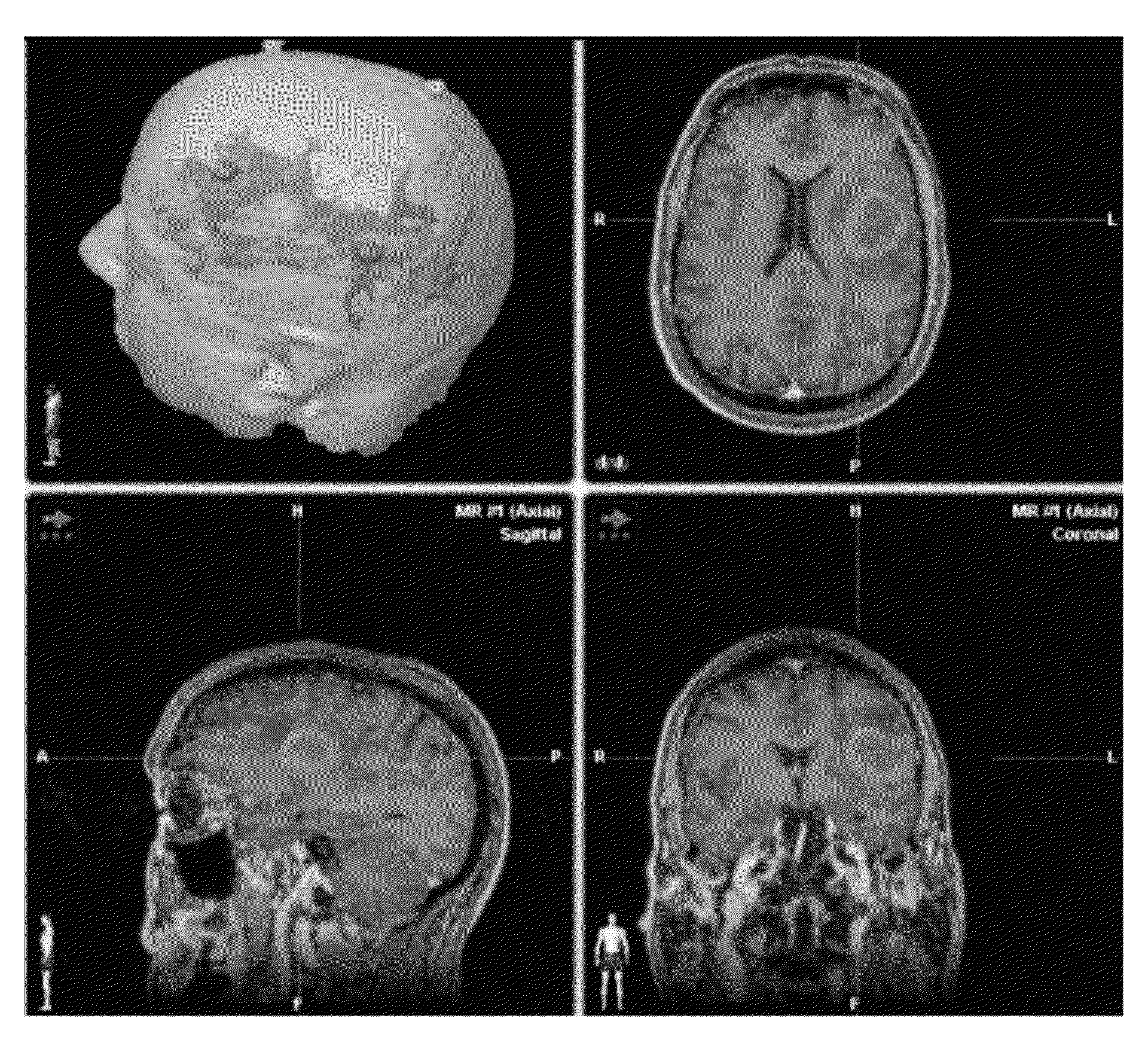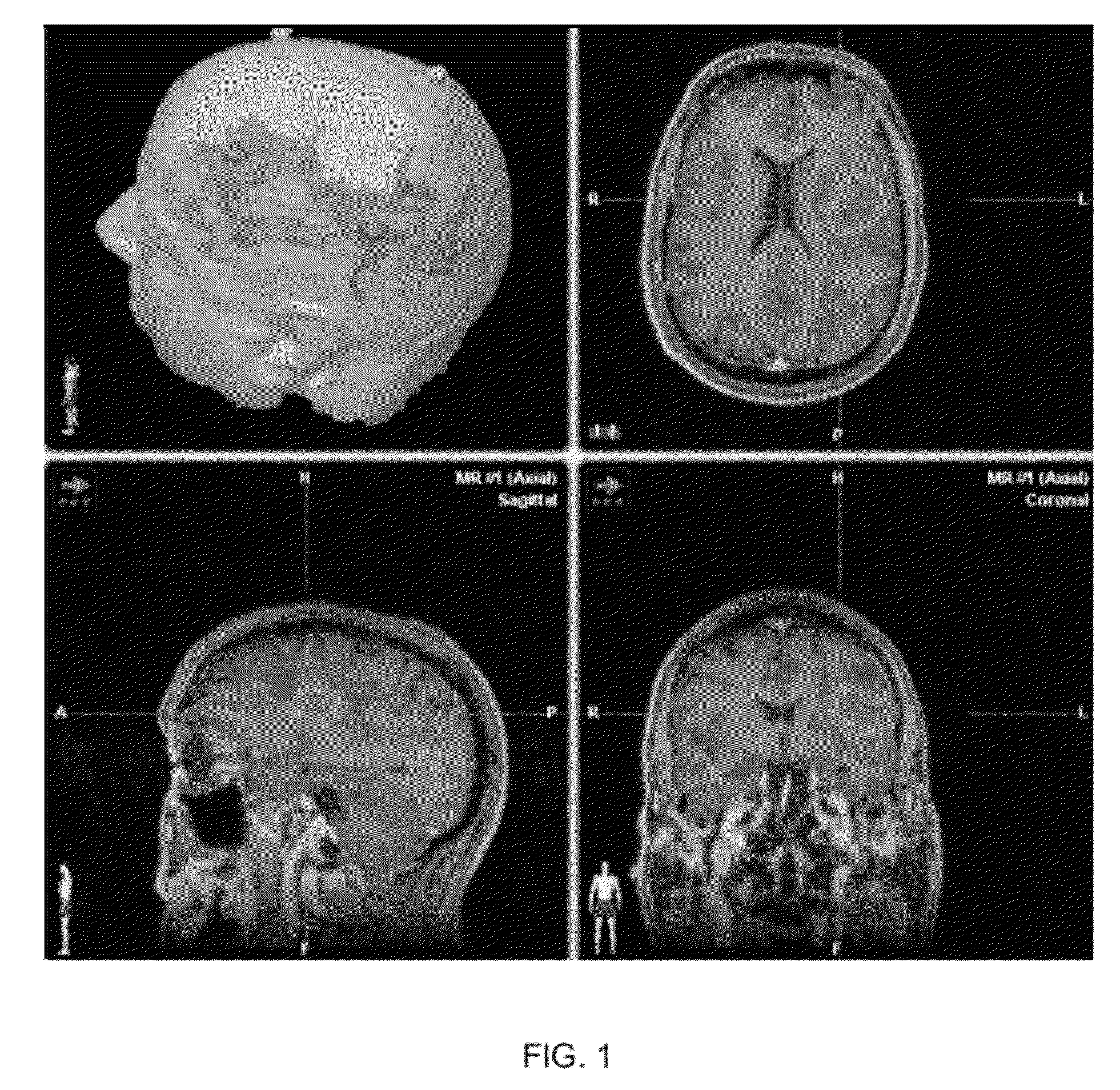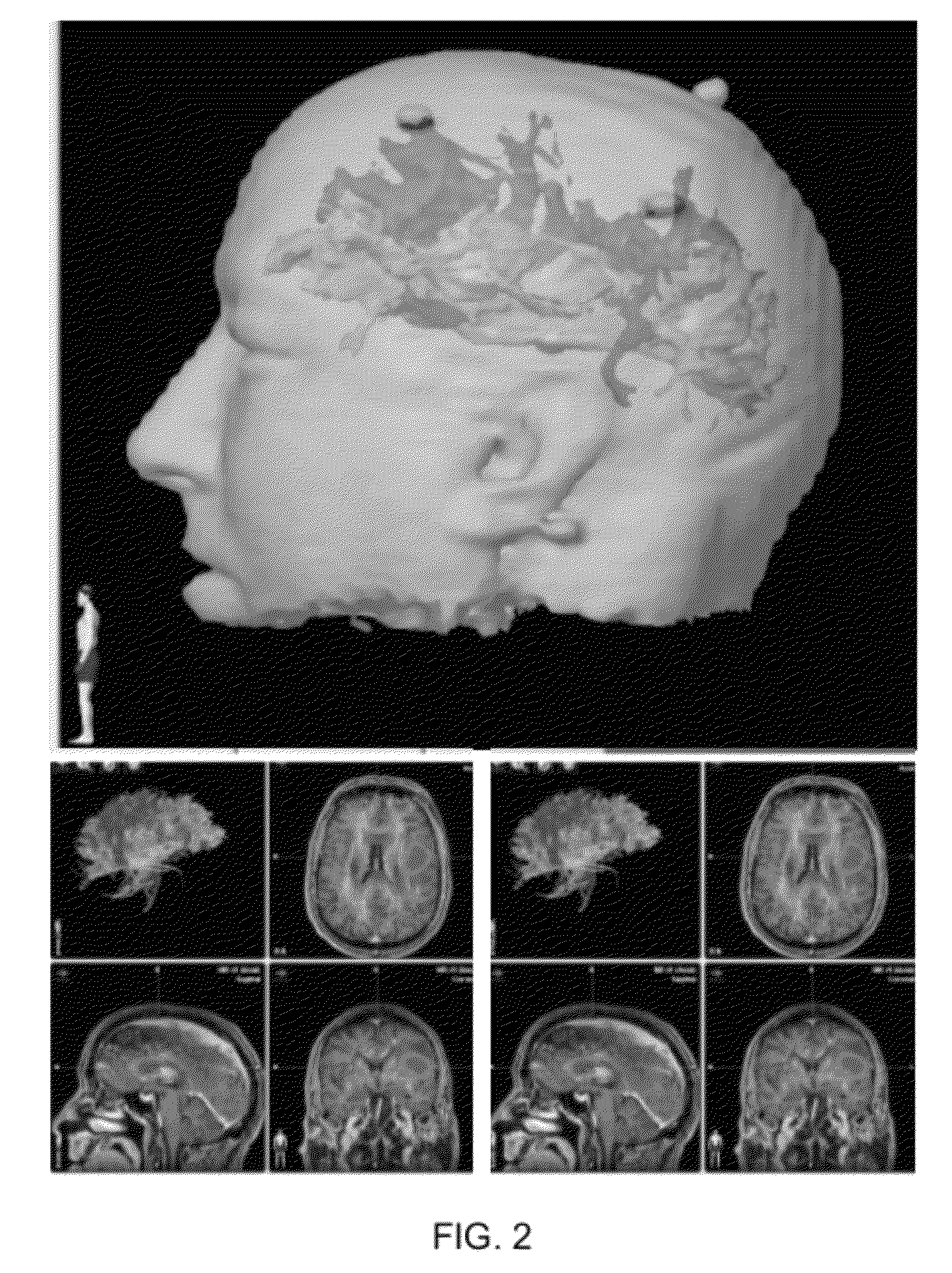Method of rapidly visualizing essential neural pathways
a neural pathway and rapid technology, applied in the field of computer assisted surgery, can solve the problems of long time taken to use software in preparation for surgery, its routine use in the cranial cavity, etc., and achieve the effect of improving the safety, efficiency and precision of brain tumor surgery
- Summary
- Abstract
- Description
- Claims
- Application Information
AI Technical Summary
Benefits of technology
Problems solved by technology
Method used
Image
Examples
example 1
(FIGS. 1-3)
[0054]Patient: 45-year-old male, right-handed with Broca's area type ‘A’ cortical lesion.[0055]Preoperative Status: Seizure disorder with intermittent speech arrest and word finding difficulties.[0056]Procedure: DTI-FT, f-MRI BOLD SPPECH Mapping, intra-operative somatosensory evoked potential (SSEP) studies.[0057]Alternative approach: Awake craniotomy. Patient refused to undergo awake procedure.[0058]DTI Data: superior longitudinal fasiculus (SLF), inferior longitudinal fasiculus (ILF) uncinate fasiculus (UNC) reconstructed. Infiltration of speech fibers along medial wall of tumor. Type ‘ A’ subcortical tumor presentation. Fiber tracts displayed along ¾ wall of the tumor except a 5 mm area in the wall superiorly where fibers were not present.[0059]BOLD Data: Speech cortex infiltrating the tumor.[0060]Outcome: 5 mm opening made after initial transsulcal approach. Subtotal resection achieved. Significant improvement in speech after surgery. No new postoperative deficits. Se...
example 2
(FIGS. 4-6)
[0062]Patient: 81-year-old male, right-handed with frontal PS type ‘B’ motor cortex and type ‘B’ subcortical newly diagnosed GBM.[0063]Preoperative Status: No motor weakness from lesion.[0064]Procedure: DTI-FT, f-MRI BOLD MOTOR mapping, and intraoperative electrophysiological motor mapping studies integrated with MR based neuronavigation.[0065]DTI-Results: Type ‘B’ subcortical CST presentation. Fiber tracts displaced by tumor bulk without associated disruption. All fiber tracts appear posterior, inferior, and lateral to tumor in 3D plane.[0066]BOLD Data: Motor cortex displaced laterally.[0067]Outcome: DTI data helped in surgical planning and a gross total resection achieved with postoperative deficits.[0068]Impression: Postoperative DTI study is helpful to analyze and quantify change in fiber tracts characteristics in response to tumor resection and thereby, predict prognosis.
EXAMPLE 3
(FIGS. 7-11)
[0069]Patient: 31-year-old, newly diagnosed, Rt. Frontal non-enhancing type ...
example 3
(FIGS. 12-15)
[0076]Patient: 78-year-old female with metastatic brain tumors: type ‘C’ cortical, type ‘B’ subcortical tumor.[0077]Preoperative Status: Headaches. No deficits. KPS 90.[0078]Procedure: DTI-FT, f MRI BOLD SPEECH-Motor mapping, Intraoperative electrophysiological motor mapping studies.[0079]DTI results: Type ‘B’ subcortical tumor. Fiber tracts displaced posteriorly by the tumor.[0080]BOLD results: Type ‘C’ cortical tumor. Speech reflected to the left brain.[0081]Outcome: Gross total resection of tumor achieved. No postoperative deficits.[0082]Impression: Lack of neurological deficits suggests displacement of motor fibers in the subcortical plane rather than compression by the tumor. Postoperative DTI is helpful in validating this finding.
PUM
 Login to View More
Login to View More Abstract
Description
Claims
Application Information
 Login to View More
Login to View More - R&D
- Intellectual Property
- Life Sciences
- Materials
- Tech Scout
- Unparalleled Data Quality
- Higher Quality Content
- 60% Fewer Hallucinations
Browse by: Latest US Patents, China's latest patents, Technical Efficacy Thesaurus, Application Domain, Technology Topic, Popular Technical Reports.
© 2025 PatSnap. All rights reserved.Legal|Privacy policy|Modern Slavery Act Transparency Statement|Sitemap|About US| Contact US: help@patsnap.com



